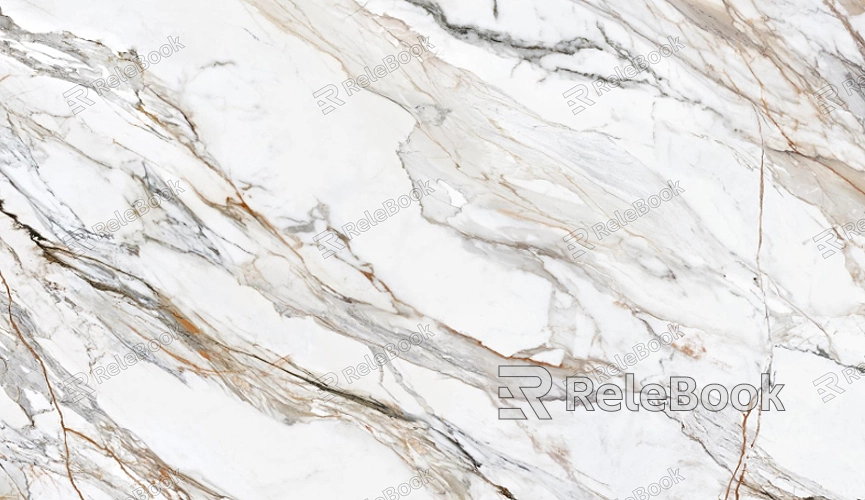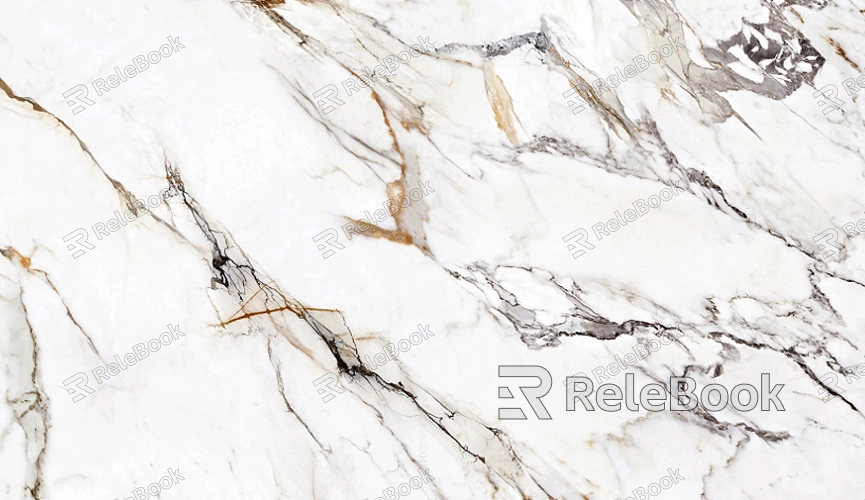How to Make Marble Tile Texture in Illustrator?
Marble, a natural stone that features elegant patterns and rich veining, can add depth and luxury to any design. In this article, we will explore the step-by-step process of creating a marble tile texture in Illustrator, along with tips and techniques that can help you achieve a stunning result. By the end, you will have a better understanding of how to craft realistic marble textures and how to use them effectively in your designs.

Start with a New Document
The first step in creating a marble tile texture is to open Adobe Illustrator and create a new document. Choose the desired size based on your design needs. For tile patterns, you might want to set up a square artboard, as it allows you to easily create and manipulate a seamless pattern. Set the color mode to RGB or CMYK, depending on whether you plan to use the texture for digital or print purposes.
Create the Base Texture
Begin by creating a base layer for your marble texture. Use a rectangular shape to form the background of the tile. This will serve as the foundation for the marble’s subtle texture. For a marble tile, it’s important to start with a color that closely mimics marble, such as light gray or off-white. Select the color fill tool and apply the chosen color to the rectangle.
Add Subtle Veins and Movement
Marble textures are known for their intricate veins and movements within the stone. To create these veins, use the Pen Tool to draw organic, flowing lines across the tile. These lines should vary in thickness and curve to replicate the natural veins of marble. Once your lines are in place, adjust the stroke weight and apply a gradient or soft transparency to create a more natural appearance. Consider using various shades of gray or white to ensure the veins are subtle but visible.

Apply Texture Using Brushes
For a more textured effect, Illustrator offers several brush tools that can add depth to your marble tile design. You can either use existing texture brushes or create custom ones that mimic the rough, uneven surface of marble. To apply texture, create a new layer on top of the veins and set the brush strokes to a low opacity. These strokes will add a sense of movement and richness to the tile.
Refine with Transparency and Layer Effects
To add more realism to the texture, experiment with transparency and blending modes. Select the marble base layer and adjust the opacity to make it slightly more transparent. You can also use Illustrator’s layer effects to create soft shadows or glows around the veins and textures, making them appear more three-dimensional. The key to creating a realistic marble tile texture is layering and blending different effects in a way that mimics the stone’s natural qualities.
Create a Seamless Pattern
Once you have perfected your marble texture, you’ll want to create a seamless pattern. This will allow you to use the texture repeatedly without visible seams. Select the entire artwork, including the base layer and veins, and go to the "Object" menu. Choose "Pattern" and then "Make." This will open the Pattern Options window, where you can adjust the spacing and alignment to ensure a seamless tile pattern. Save the pattern for later use, and you now have a reusable marble tile texture.
Add Detail and Customization
To give your marble tile texture even more realism, you can add small details like cracks, small chips, or other imperfections. Use the Pencil Tool to draw tiny, irregular shapes along the veins or edges of the marble. These small touches will add authenticity to your design. You can also experiment with color variations, like adding hints of gold or deep brown, which are common in high-end marble types.
Finalize the Texture
Once you are satisfied with the overall look of your marble tile texture, finalize it by adjusting the colors, opacity, and effects. You may want to tweak the contrast or brightness to ensure the texture is not too stark or dull. Lastly, ensure the texture is aligned and ready to be used in your design. The tile texture should seamlessly fit into your project, whether it is used for background elements or as a focal point in a luxurious design.
In conclusion, creating a marble tile texture in Adobe Illustrator requires careful attention to detail, from selecting the right colors to layering the textures for depth. By following the steps outlined above, you can create a realistic and customizable marble texture that will elevate your designs. To explore even more textures and 3D models, be sure to visit Relebook’s website for a range of resources that will help bring your design projects to life.
FAQ
Can I create a marble tile texture without using the Pen Tool?
While the Pen Tool is a helpful tool for creating veins and organic shapes, you can also experiment with other Illustrator tools like the Blob Brush or the Shape Builder Tool. These tools allow you to draw freeform lines or combine shapes to create a similar effect.
What is the best color for a marble texture?
The color of the marble texture depends on the style and aesthetic you're going for. For a classic marble effect, shades of white, gray, and black work well. You can also experiment with more colorful variations like cream, beige, or even colorful marbles for a unique look.
How do I ensure my marble tile texture is seamless?
To create a seamless marble tile texture, make sure your design elements align perfectly at the edges. Use Illustrator's Pattern tool to tile the texture without visible seams. Pay attention to the spacing and positioning of the veins, ensuring that they flow naturally across the tile.
Can I use a marble tile texture for both print and digital projects?
Yes, marble tile textures can be used for both digital and print projects. However, if you're designing for print, be sure to use the CMYK color mode for accurate color reproduction. For digital designs, RGB mode is ideal.
Are there any tips for adding more realism to the texture?
To enhance the realism of your marble texture, experiment with different blending modes, layer effects, and opacities. Adding subtle variations in color and texture will make the design appear more natural. Consider adding small cracks, imperfections, or depth to make the tile feel more authentic.

